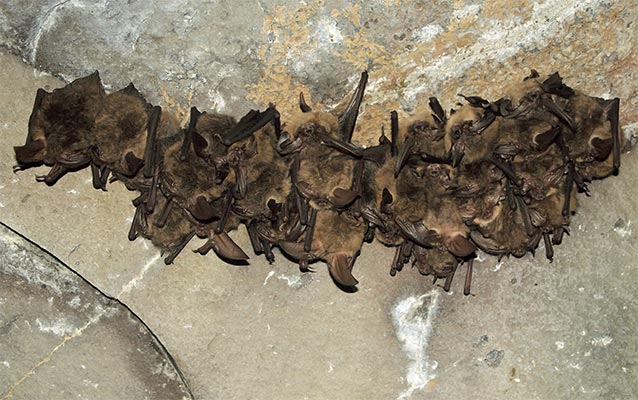Last updated: November 17, 2023
Lesson Plan
Bat and Moth

- Grade Level:
- Upper Elementary: Third Grade through Fifth Grade
- Subject:
- Science
- Lesson Duration:
- 30 Minutes
- State Standards:
- Alaska State Standards
Science: A12, 14, 15; B1, 2, 3; D1, 2;
Essential Question
How does observation help us understand wildlife and habitat?
Objective
Using discovery and observation, students will better understand the role of little creatures as they relate to their habitat and other living things.
Preparation
Explain the following to the students:
Not all little creatures can be found during the day. What are some little creatures that are active at night? (bats, moths and other insects, some mice and other rodents). How does a bat find its food? (Through the use of sonar. The bat sends out a high pitched sound as it flies. If those sound waves hit something—a moth or some kind of obstacle—they bounce back to the bat. Through this use of sonar, a little bat can catch and eat up to 3,000 insects in one night).
Procedure
Gather the group in a circle with students an arm’s length apart from each other.
- Choose one student to be the bat, and a different student to be the moth.
- Explain that the bat, who will be blindfolded to simulate darkness (bats are not blind, in fact their eyesight is quite good), will try to catch the moth using “sonar”. To do this the bat and moth will both be inside the circle. Neither the bat nor the moth can leave the circle of students during the game.
- On the teacher’s signal the game begins. The bat calls out “BAT!” to which the moth must immediately reply “MOTH”. Both bat and moth may walk inside the circle, but neither may run. The bat calls out as often as needed, and walks in the direction of the moth’s response. This is done until the bat catches the moth. When this happens, allow other students to play the parts.
- If a bat is having trouble catching the moth, stop the game. Decrease the size of the circle. What does this signify? (Loss of habitat) Resume play. After playing the game a few times, try some variations using one bat and several moths, or one moth and several bats.
Assessment Materials
Discuss the niche that bats have in the ecosystem. (A niche is the “job” of an animal or plant.)
Suppose that we decide to kill all of the bats in the area. What effects might that have on us? (We might have a huge problem with mosquitoes and other insects.)
What effects might that have on other plants and animals? (Different plants might be killed or injured by the increased number of insects. This in turn would affect the animals that use these plants as food or shelter.)
Additional Resources
This lesson is part of our "Pathways to Discovery" unit. The individual lessons can be done individually or as a larger unit of learning. They encourage the development of a student’s awareness and appreciation of the natural world and people’s relationship and role as a part of that natural world.
The lessons are a series of shorter activities that have been blended together under a specific theme with the intent that the activities will be coordinated with units in the existing school curriculum and texts. The materials are organized by grade level, but can actually be adapted for use at any grade level. Check out the Pathways to Discovery lessons.
For more information about this lesson plan, please contact the park Education Specialist by email at wrst_info@nps.gov
